TTV Monitoring Calculator
TTV Level Assessment
Enter your Torque Teno Virus (TTV) level in log10 copies/mL to determine if your immunosuppression is balanced.
When you're on immunosuppressive drugs-whether after a kidney, liver, or heart transplant, or for a condition like lupus or rheumatoid arthritis-your body is being deliberately slowed down. That’s the point. But slowing down your immune system too much can leave you open to serious infections. Too little, and your body might start attacking your new organ or your own tissues. The tightrope walk between these two dangers is why monitoring during immunosuppressive therapy isn’t optional-it’s life-saving.
Why Monitoring Isn’t Just a Routine Check
Immunosuppressants like tacrolimus, cyclosporine, and mycophenolate don’t work like antibiotics or painkillers. You can’t just take a standard dose and expect the same result. Two people on the same pill, at the same dose, can have completely different drug levels in their blood. One might be safe, the other at risk of rejection or kidney damage. This isn’t guesswork. It’s science. And it’s why therapeutic drug monitoring (TDM) became standard practice in the 1980s after cyclosporine was introduced. Back then, doctors realized that without measuring blood levels, they were flying blind. Today, we know that the difference between a therapeutic dose and a toxic one is often less than a factor of two. For tacrolimus, the target range in the first three months after a kidney transplant is 5-10 ng/mL. Drop below 5, and rejection risk jumps. Rise above 10, and you’re looking at kidney damage, high blood sugar, or tremors. That’s why regular blood tests aren’t just paperwork-they’re your safety net.Key Drugs That Need Blood Testing
Not all immunosuppressants need the same level of monitoring. Some, like corticosteroids (prednisone) or belatacept, don’t require routine blood level checks because their effects are more predictable. But others? They demand precision.- Tacrolimus: Monitored at trough levels (just before your next dose). Target: 5-10 ng/mL early post-transplant, then 3-7 ng/mL long-term. Levels are measured using LC-MS/MS, the gold standard, because cheaper immunoassays can give false readings due to cross-reactivity with metabolites.
- Cyclosporine: Often tracked with both trough (C0) and 2-hour post-dose (C2) levels. C2 levels correlate better with rejection risk-studies show a correlation of 0.87 with graft outcomes. Target: 100-200 ng/mL.
- Sirolimus and Everolimus: These mTOR inhibitors have a recommended range of 5-10 μg/L, but evidence linking levels to outcomes is weaker. Still, doctors use them to avoid side effects like high cholesterol and lung inflammation.
- Mycophenolic Acid (MPA): Tricky because it recycles through the gut and liver. Trough levels aren’t enough. The best predictor of success is the area under the curve (AUC)-specifically, keeping it between 30-60 mg·h/L. Patients with AUC in this range have an 85% chance of staying rejection-free in the first year.
What Lab Tests Are Done Regularly?
Beyond drug levels, your body’s response to these drugs needs constant watching. Here’s what’s typically checked every 1-3 months:- Full blood count: To catch low white blood cells (leukopenia), anemia, or low platelets-all common with mycophenolate and sirolimus.
- Creatinine and electrolytes: Kidney function is the first thing to go wrong with calcineurin inhibitors. A 30% rise in creatinine from baseline often signals early toxicity.
- Liver enzymes: Some drugs stress the liver, especially in the first few months.
- Calcium, magnesium, phosphate: Cyclosporine causes magnesium loss in 40-60% of patients. Low magnesium leads to muscle cramps, irregular heartbeat, and seizures.
- Fasting glucose and lipids: Tacrolimus increases diabetes risk by 30%. Sirolimus and everolimus spike cholesterol and triglycerides in 60-75% of users.
- Uric acid: High levels can trigger gout, especially with cyclosporine.
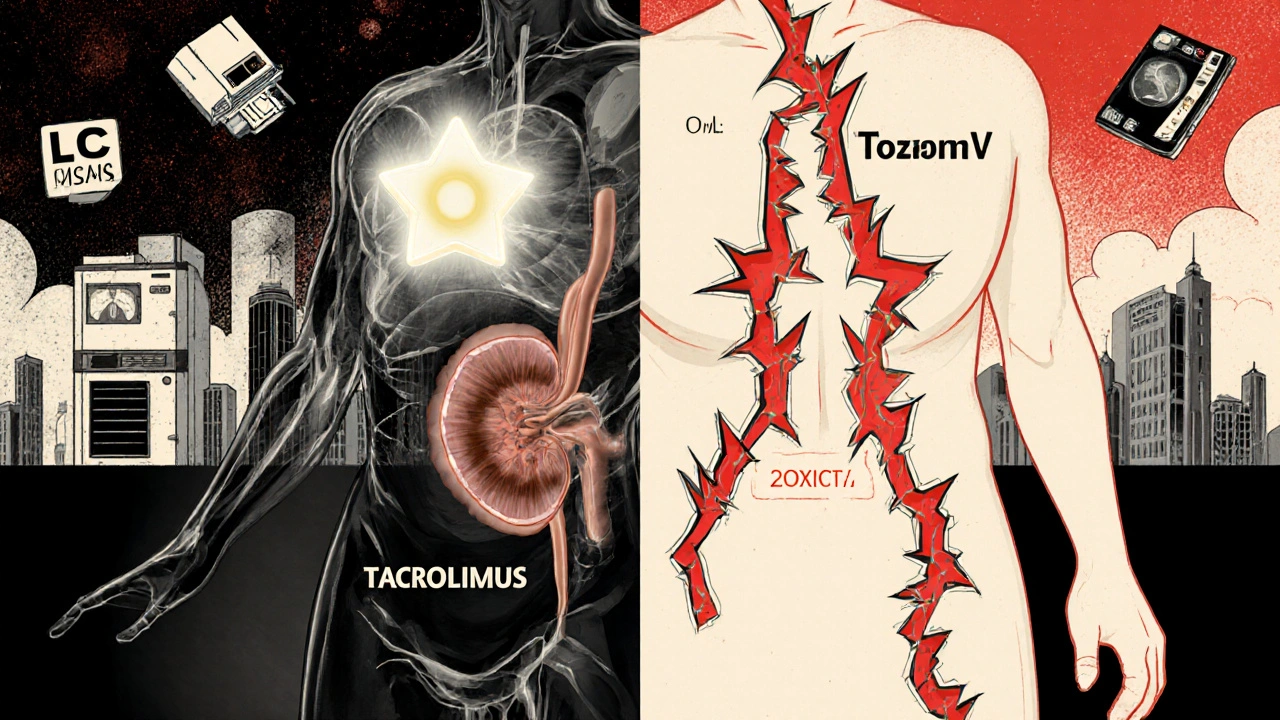
Imaging: Seeing What Blood Tests Can’t
Blood tests tell you what’s happening inside your bloodstream. Imaging shows what’s happening in your organs.- Renal ultrasound: Done annually or if kidney function changes. It checks for blockages, swelling, or scarring-not always visible on blood work.
- Chest X-ray: If you have a cough, fever, or shortness of breath, this is the first step. Sirolimus can cause pneumonitis-a rare but serious lung inflammation. X-rays pick it up in 70-85% of cases.
- Bone density scan (DEXA): Mandatory after one year of steroid use. Osteoporosis develops silently. By the time you feel pain, it’s often too late.
- CT or MRI: Reserved for suspected cancers or unusual masses. Immunosuppressed patients have higher rates of skin cancer, lymphoma, and Kaposi sarcoma. Regular skin checks are also critical.
The New Frontier: TTV Monitoring
Forget guessing. A new tool is emerging that doesn’t measure drug levels-it measures your immune system’s activity. It’s called Torque Teno Virus (TTV). You probably have it right now. It’s harmless. But in transplant patients, it’s everywhere-detectable in nearly 100% of people on immunosuppressants. Here’s the breakthrough: the amount of TTV in your blood directly reflects how suppressed your immune system is. Too little TTV? Your immune system is too active-you’re at risk of rejection. Too much? Your immune system is too weak-you’re at risk of infection. Studies show the sweet spot for kidney transplant patients between months 4 and 12 is 2.5-3.5 log10 copies/mL. Below that? Three times higher risk of rejection. Above it? Nearly three times higher risk of serious infection. The TTVguideIT trial, involving 300 patients across multiple countries, found that using TTV to guide drug dosing cut infections by 28% and rejection episodes by 22% compared to standard care. That’s not a small win. That’s a game-changer. It’s not perfect yet. Labs don’t all use the same test. Cut-off values vary. But the data is strong enough that France is launching the TAOIST trial in 2024 to test TTV monitoring for long-term patients. The FDA is expected to clear commercial TTV assays by 2025.What’s Holding Back Better Monitoring?
Despite the science, many centers still struggle. A 2022 survey of 150 transplant centers found:- 68% had inconsistent TDM practices between different teams in the same hospital.
- Only 42% used standardized protocols for mycophenolate monitoring.
- 75% cited cost as the biggest barrier. LC-MS/MS tests cost $150-250 each. Immunoassays are cheaper but less accurate.
- 63% said there’s no agreement on what the right drug levels should be.
The Future: AI and Point-of-Care Tools
The next leap isn’t just in tests-it’s in prediction. A 2023 study in Nature Medicine used artificial intelligence to analyze patterns in tacrolimus levels, TTV load, and lab results. The algorithm predicted acute rejection 14 days before symptoms appeared-with 87% accuracy. Soon, you might not need to wait for a lab appointment. Point-of-care devices that measure drug levels from a finger-prick blood sample are in phase 2 trials. FDA approval could come by 2026-2027. Researchers are even exploring exhaled breath tests to detect metabolites of immunosuppressants-non-invasive, fast, and painless.Is It Worth It?
Yes. A 2022 cost analysis found that comprehensive monitoring adds $2,850 per patient per year-but prevents $8,400 in costs from rejections, hospital stays, and failed transplants. That’s a nearly 3-to-1 return on investment. The bottom line: Monitoring during immunosuppressive therapy isn’t about checking boxes. It’s about keeping you alive, healthy, and off the transplant list for good. The tools are getting smarter. The science is clearer. And the goal hasn’t changed: balance the suppression, protect the organ, and keep you living your life.How often do I need blood tests for immunosuppressants?
In the first 3 months after transplant, you’ll typically have blood tests every 1-2 weeks. By month 4-6, this usually drops to every 2-4 weeks. After the first year, most patients are tested every 1-3 months, unless there’s a change in health or medication. Drug levels, kidney function, and blood counts are checked each time. TTV testing, if available, may be added every 2-3 months once you’re stable.
Can I skip my lab tests if I feel fine?
No. Many problems caused by immunosuppressants-like rising creatinine, early signs of diabetes, or low white blood cells-don’t cause symptoms until they’re advanced. You might feel great but still be at risk of rejection or kidney damage. Skipping tests is like driving without checking your oil light. The damage is already done by the time you notice.
Why is LC-MS/MS better than immunoassays for drug testing?
Immunoassays are cheaper but can mistake similar molecules (metabolites) for the actual drug, giving falsely high or low readings. LC-MS/MS separates the exact drug molecule from everything else in your blood. It’s more precise-95-98% accurate-so your doctor knows exactly how much active drug is in your system. That’s critical when the difference between safety and danger is just a few ng/mL.
What if my TTV level is too high or too low?
If TTV is too low (below 2.5 log10 copies/mL), your immune system is likely too active, increasing rejection risk. Your doctor may reduce your immunosuppressant dose. If TTV is too high (above 3.5 log10), your immune system is overly suppressed, raising infection risk. Your dose may be increased. This isn’t guesswork-it’s data-driven adjustment. But TTV-guided therapy is still new and only available at specialized centers.
Do I need imaging if my blood tests are normal?
Yes. Some problems don’t show up in blood work. A kidney transplant might be slowly scarring without changing creatinine levels. Steroid use can weaken bones without pain. Chest X-rays catch lung inflammation before you’re gasping for air. Annual imaging like renal ultrasound and DEXA scans are preventive-not reactive. They’re part of the plan, even when you feel fine.

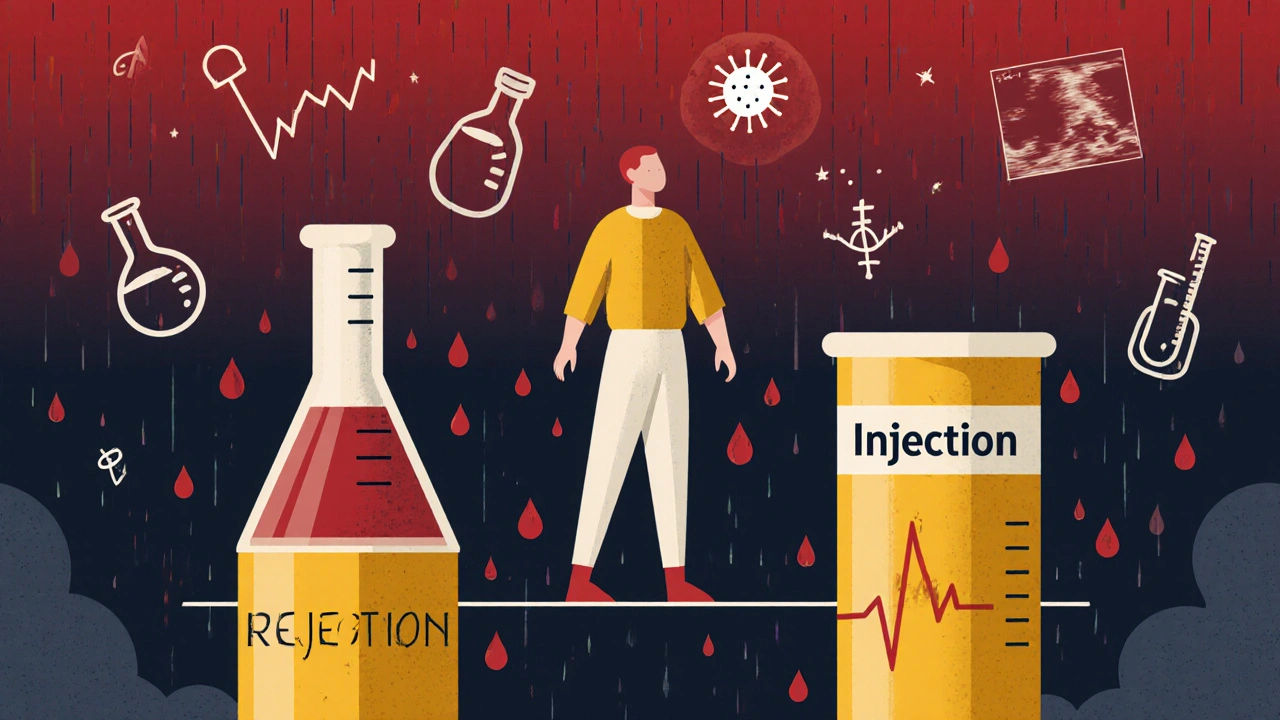
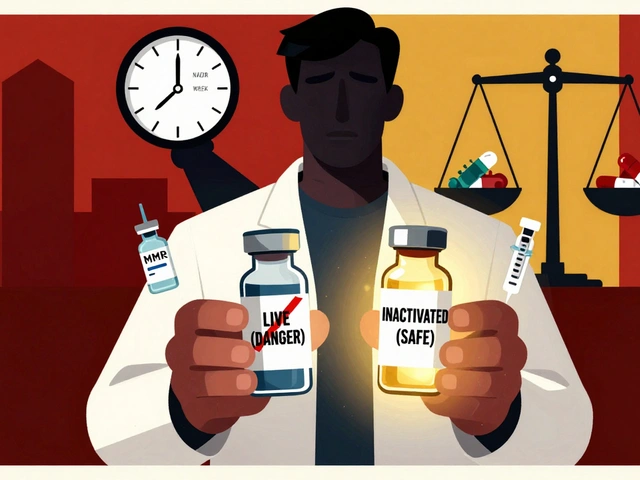
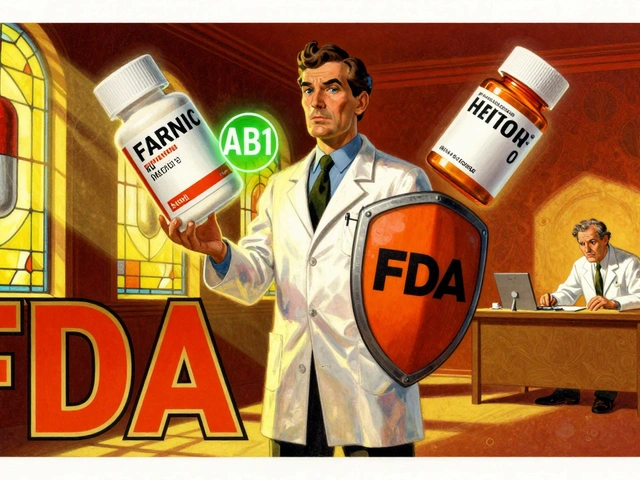


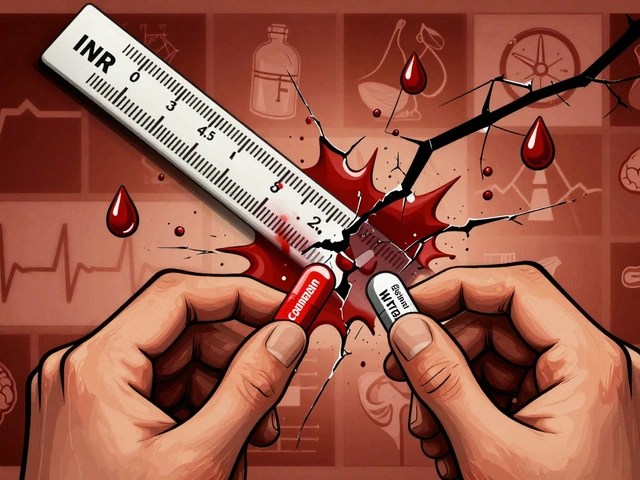
Elaina Cronin
November 20, 2025 AT 14:36While I appreciate the thoroughness of this piece, the omission of any mention of ethnic variability in drug metabolism is a glaring oversight. Tacrolimus clearance in East Asian populations is significantly lower than in Caucasians-yet protocols remain standardized. This isn't just negligence; it's a systemic failure in personalized medicine. We are not all the same, and treating us as such is dangerous.
Willie Doherty
November 20, 2025 AT 21:42Statistical correlation ≠ causation. The TTV data is intriguing, but the TAOIST trial is observational, and the 28% infection reduction claim is based on a non-blinded cohort. Until there’s a randomized controlled trial with hard endpoints-mortality, graft survival, quality of life-this is hypothesis, not protocol. The literature is littered with biomarkers that looked promising until they weren’t.
Darragh McNulty
November 21, 2025 AT 19:01This is exactly the kind of info every transplant patient needs to read! 🙌 Seriously, I’ve been on tacrolimus for 7 years and had no idea about the AUC for MPA or TTV monitoring. My doc just says ‘come back in a month’ and I nod like a good little zombie. This is life-changing stuff. Thank you for breaking it down without jargon overload. 👏💊
David Cusack
November 22, 2025 AT 14:04One must ask: is this truly science-or merely the institutionalization of profit-driven surveillance? LC-MS/MS tests cost $200. Who profits? Labs. Who pays? Patients. And who decides what ‘target’ levels are? Pharma-funded panels. The ‘gold standard’ is a convenient myth. The real goal is not safety-it’s perpetual dependency. The system is designed to keep you hooked-on drugs, on tests, on fear.
Daisy L
November 22, 2025 AT 19:35Look, I get it-science is great-but America’s healthcare system is a circus. You want to monitor my tacrolimus? Fine. But I have to wait 3 weeks for an appointment, pay $800 out of pocket, and then get a bill for $2,000 because ‘the lab used the wrong code.’ Meanwhile, in Canada, they do it for free. This isn’t medicine. It’s a luxury for the rich. Stop pretending this is about health-it’s about money.
Eliza Oakes
November 24, 2025 AT 02:15Oh please. TTV? Really? The same virus that’s been in 90% of humans since birth is now a magic immunosuppression meter? And you’re telling me we’re going to base life-or-death decisions on a virus we don’t even understand? What’s next? Astrology-guided immunosuppression? I’ve seen this movie before-remember the ‘cytokine storm’ panic? This is pseudoscience dressed in lab coats.
Donald Frantz
November 24, 2025 AT 19:07How is the AUC for mycophenolic acid calculated in real-world practice? Is it done via serial sampling over 12 hours? If so, how many patients actually undergo this given the logistical burden? And if not-how valid are the cited 85% rejection-free rates? The disconnect between ideal protocols and clinical reality needs to be acknowledged. This isn’t just about data-it’s about feasibility.
Debanjan Banerjee
November 26, 2025 AT 14:42As a pharmacologist working in a transplant center in Mumbai, I can confirm that the challenges described are universal. We lack LC-MS/MS machines, so we use immunoassays-and yes, they’re inaccurate. But we adapt: we use clinical signs (e.g., rising creatinine, fever, lymphopenia) alongside the flawed numbers. We also use lower target ranges for Indian patients due to lower body weight and CYP3A5 polymorphism prevalence. The science is sound, but implementation must be contextual. One size does not fit all.
Steve Harris
November 28, 2025 AT 13:41I’ve been on immunosuppressants for 12 years. I’ve had 3 rejections, 2 infections, and one hospitalization because my levels weren’t checked in time. This article? It’s the reason I’m still alive. I don’t care about the cost or the bureaucracy. I care that someone out there is finally talking about this in a way that doesn’t make me feel like a number. Thank you for writing this. I’m sharing it with every transplant group I’m in.
Michael Marrale
November 29, 2025 AT 12:26Wait… so they’re tracking a virus to monitor your immune system… but who’s really controlling the virus? Are you telling me the government or Big Pharma is secretly using TTV to manipulate our immune responses? I’ve read about this before-there’s a patent from 2018 that links TTV levels to AI-driven dosing algorithms. They’re not just monitoring you-they’re profiling you. And what happens when the algorithm makes a mistake? You’re the one who dies.
David vaughan
November 29, 2025 AT 23:02Just wanted to say-this is the most helpful thing I’ve read in years. I’ve been skipping my labs because I felt fine. Now I get it: feeling fine doesn’t mean you’re safe. I’ve scheduled my next blood draw. And yes, I’ll ask about TTV testing. I’m tired of flying blind. Thanks for the clarity. 🙏